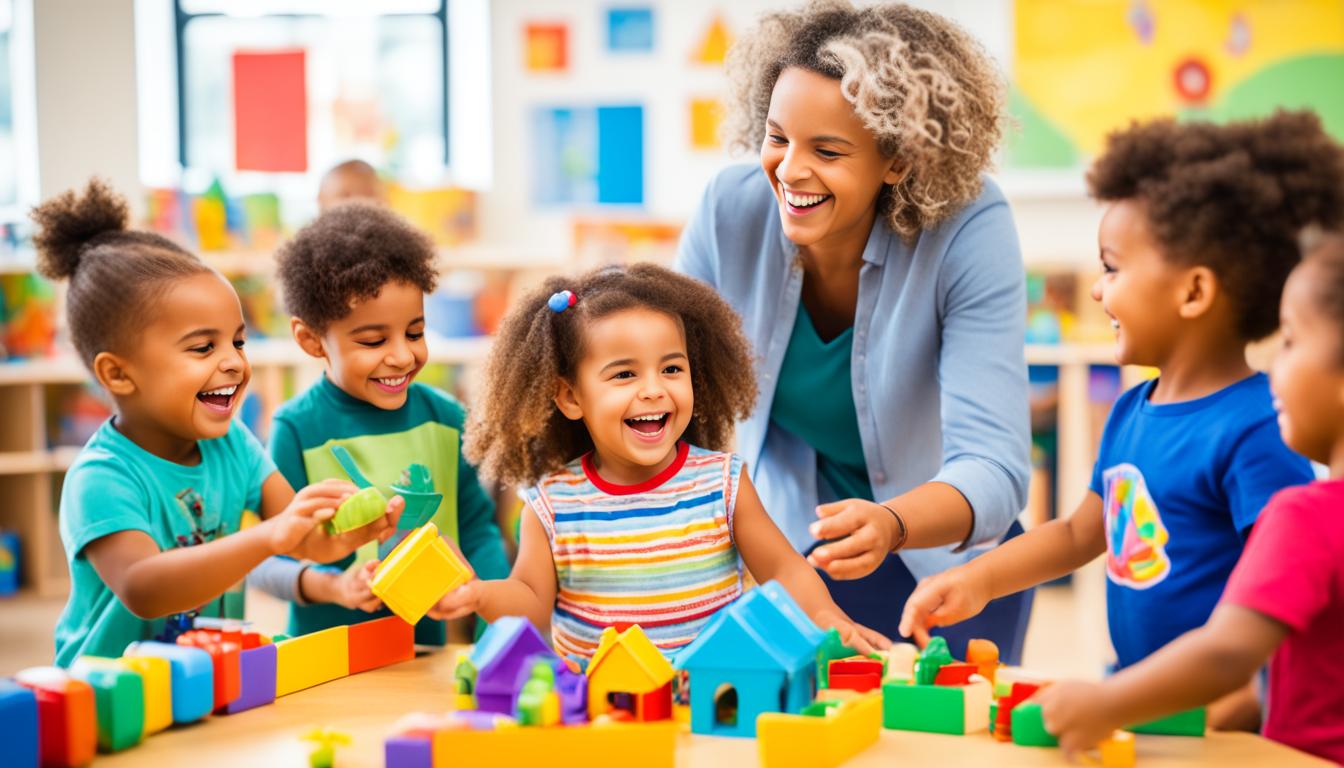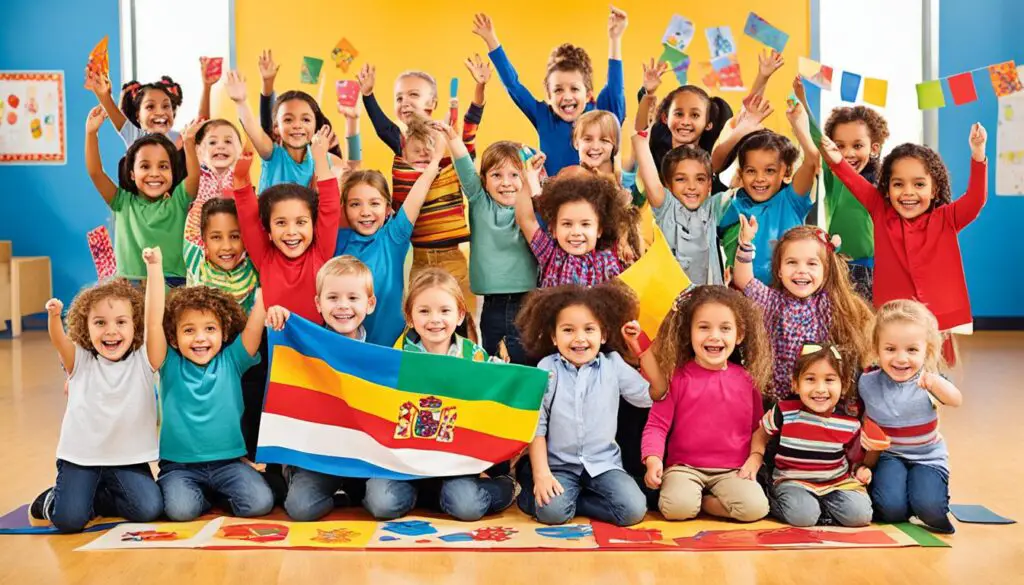
Embracing Cultural Diversity in Early Childhood Education: Strategies and Benefits
In today’s diverse society, it is crucial for early childhood education to embrace cultural diversity. By consciously incorporating strategies that celebrate and value different cultures, educators can create a rich and inclusive learning environment for young children. Not only does this foster a positive atmosphere, but it also promotes understanding, empathy, and respect among students.
When children are exposed to cultural diversity from an early age, they develop a broader perspective of the world and become more open-minded individuals. By experiencing different languages, traditions, and values, they learn to appreciate diversity and strive for inclusivity. Research indicates that a culturally diverse classroom enhances cognitive development, language skills, social-emotional competence, and overall academic achievement.
This section will explore the importance of cultural diversity in early childhood education and provide strategies for educators to embrace and incorporate it into their teaching practices. Let’s dive into the strategies that can help create a culturally diverse and inclusive learning environment for young learners.
Key Takeaways:
- Embracing cultural diversity in early childhood education promotes inclusivity and fosters a positive learning environment.
- Exposing children to diverse experiences enhances their cognitive development, language skills, and social-emotional competence.
- Cultural diversity in the classroom cultivates empathy, respect, and tolerance among students.
- Strategies such as incorporating multicultural literature and celebrating cultural holidays can help embrace cultural diversity in early childhood education.
- Embracing cultural diversity benefits both children and educators, promoting respect, appreciation, and professional growth.
Importance of Cultural Diversity in Early Childhood Education
Cultural diversity plays a crucial role in early childhood education as it helps children develop an understanding and appreciation for different cultures and perspectives. By exposing children to diverse experiences, languages, traditions, and values, educators can cultivate empathy, respect, and tolerance. Research shows that a culturally diverse classroom enhances cognitive development, language skills, social-emotional competence, and overall academic achievement.
Children who are exposed to cultural diversity from an early age are more likely to have open minds and embrace differences in others. They learn to see beyond stereotypes and develop a sense of curiosity about different cultures. This curiosity fuels their desire to learn, explore, and broaden their knowledge about the world they live in.
“Early childhood is the ideal time to introduce children to cultural diversity. It sets the foundation for lifelong learning and fosters a positive attitude towards inclusivity.”
In a culturally diverse classroom, children have the opportunity to develop social skills by interacting with peers from various backgrounds. They learn to communicate effectively, collaborate, and engage in respectful dialogue with others who may have different perspectives and experiences. This not only strengthens their social-emotional competence but also prepares them for the diverse society they will navigate as they grow.
Moreover, a culturally diverse classroom promotes cognitive development by challenging children to think critically, problem-solve, and make connections between different cultures. They develop a global mindset, which allows them to analyze situations from multiple perspectives and find creative solutions. This cognitive flexibility is invaluable in today’s interconnected world.
“Cultural diversity in early childhood education is not only about accepting differences but also celebrating and valuing them. It lays the foundation for a more inclusive and harmonious society.”
Overall, embracing cultural diversity in early childhood education is of utmost importance. It prepares children to confidently navigate cultural differences, fosters a sense of belonging and respect, and empowers them to become global citizens who appreciate and contribute to their diverse communities.

| Benefits of Cultural Diversity in Early Childhood Education | Strategies |
|---|---|
| Enhances cognitive development | 1. Incorporating multicultural literature and resources |
| Improves language skills | 2. Celebrating cultural holidays and events |
| Promotes social-emotional competence | 3. Inviting guest speakers from different backgrounds |
| Boosts overall academic achievement | 4. Encouraging families to share customs and traditions |
Strategies for Embracing Cultural Diversity in Early Childhood Education
Embracing cultural diversity in early childhood education is a multi-faceted endeavor that requires thoughtful planning and implementation. Educators play a crucial role in creating an inclusive learning environment that celebrates and values the diverse backgrounds and experiences of their students. By employing a variety of strategies, educators can effectively embrace cultural diversity and provide enriching educational experiences for young children.
Incorporating Multicultural Literature and Resources
Integrating multicultural literature and resources into the curriculum is an effective way to expose children to different cultures and perspectives. By incorporating books, videos, and other educational materials that reflect diverse cultures, educators can promote cultural understanding and foster empathy among their students. This not only provides children with the opportunity to learn about different traditions and beliefs but also helps them develop a broader worldview.
Celebrating Cultural Holidays and Events
One of the most impactful ways to embrace cultural diversity is by celebrating cultural holidays and events. By organizing classroom activities and events that highlight different traditions, educators can create a sense of excitement and curiosity among their students. This not only allows children to learn about different cultures but also fosters a sense of inclusivity and acceptance within the classroom community.
Inviting Guest Speakers from Different Backgrounds
Bringing in guest speakers from various cultural backgrounds is a valuable strategy for embracing cultural diversity. Guest speakers can share their personal experiences, traditions, and customs, providing children with firsthand knowledge and understanding of different cultures. This enriching experience helps children develop respect for diversity and cultivates a sense of global citizenship.
Encouraging Families to Share Their Customs and Traditions
The involvement of families is crucial in embracing cultural diversity in early childhood education. Educators can encourage families to share their customs, traditions, and stories with the class. This fosters a strong partnership between families and educators and allows children to gain a deeper understanding and appreciation for their peers’ cultural backgrounds. It also provides an opportunity for families to actively participate in their child’s education.
Culturally Inclusive Environment
Creating a culturally inclusive environment is essential for embracing cultural diversity. Educators can decorate the classroom with artwork and visuals that represent different cultures, ensuring that children feel a sense of belonging and representation. Additionally, providing materials and learning resources that reflect diverse cultures and perspectives helps children develop a positive self-identity and a broader understanding of the world around them.
Embracing cultural diversity in early childhood education requires intentional and sustained efforts from educators. By incorporating these strategies, educators can create a nurturing and inclusive learning environment that prepares children to thrive in a diverse and interconnected world.

Benefits of Embracing Cultural Diversity in Early Childhood Education
Embracing cultural diversity in early childhood education brings about numerous benefits for both children and educators. For children, it creates an environment that promotes respect and appreciation for diversity, allowing them to develop social skills and cultural competence from an early age. By interacting with peers from different backgrounds, children gain a broader perspective on the world and learn to value different cultures.
Fostering cultural diversity also plays a significant role in cultivating a positive self-identity among children. When children see their culture and heritage valued in the classroom, it boosts their self-esteem and nurtures a sense of belonging. Moreover, embracing cultural diversity in early childhood education equips children with the necessary skills to thrive in a multicultural society, preparing them to engage and collaborate with individuals from diverse backgrounds as they grow older.
For educators, embracing cultural diversity provides opportunities for professional growth and development. It encourages them to explore creative teaching practices that incorporate multicultural perspectives and resources, making the learning experience more engaging and dynamic for children. Additionally, working in a culturally diverse environment enhances educators’ cultural competence and broadens their understanding of the world, making them more effective and empathetic educators.
FAQ
Why is cultural diversity important in early childhood education?
Cultural diversity is important in early childhood education because it helps children develop an understanding and appreciation for different cultures and perspectives. It cultivates empathy, respect, and tolerance, enhances cognitive development, language skills, social-emotional competence, and overall academic achievement.
What strategies can educators employ to embrace cultural diversity in early childhood education?
Educators can employ various strategies to embrace cultural diversity in early childhood education. These include incorporating multicultural literature and resources, celebrating cultural holidays and events, inviting guest speakers from different backgrounds, and encouraging families to share their customs and traditions. Educators can also create a culturally inclusive environment by displaying diverse artwork and providing materials that represent different cultures.
What are the benefits of embracing cultural diversity in early childhood education?
Embracing cultural diversity in early childhood education offers numerous benefits. It promotes respect and appreciation for diversity, enhances social skills and cultural competence, cultivates a positive self-identity, prepares children to thrive in a multicultural society, fosters a love for learning, allows for professional growth, increases creativity, and enriches teaching practices.